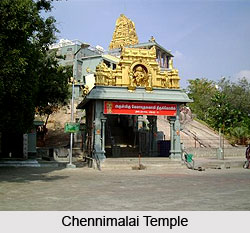 Vast continent of India houses multitudes of towns and cities that have flourished in all its states. In the state of Tamil Nadu also one finds no dearth of towns and cities. Amongst several towns Kollankoil deserves to be mentioning. It is the name of a panchayat town lying in the district of Erode of the same state of Indian subcontinent.
Vast continent of India houses multitudes of towns and cities that have flourished in all its states. In the state of Tamil Nadu also one finds no dearth of towns and cities. Amongst several towns Kollankoil deserves to be mentioning. It is the name of a panchayat town lying in the district of Erode of the same state of Indian subcontinent.
There are numerous demographers who have devoted their time for organizing surveys and research works. This was necessary for preparing reports in order to throw light on current demographical scenario. Kollankoil also follows the same tradition. In the vista of reports that were prepared it would be unwise if one does not mention the name of Census report of specific year. It was issued out in the year 2001 and thus has an enlightened person about varied aspects of its demography like literacy rate, population status. According to this report, the total population of Kollankoil has been enumerated to be 8754. Interestingly, in Kollankoil, both males and females are in equal proportion. In other words, male populace constitutes 50 %, while female populace is also the same.
How much a town has achieved development depends on the literacy condition of the particular town. So far as average literacy rate of Kollankoil is concerned, it is even higher than that of whole of India. In other words, 60 % and 59.5 % are the average literacy rates of Kollankoil and India respectively. If one analyses the report one even deciphers the status of male and female literacy of Kollankoil individually. In fact there is a gap exists between both the rates. Thus male literacy rate constitutes 71 %. In comparison, rate of female literacy is as low as 49 %. Moreover high male literacy rate also proves the propensity of males towards education and learning.
Information about kids who are residing in Kollankoil also can be inferred from the above-mentioned report. Thus children of Kollankoil who are below six years of age constitute 7 % of the total population.
The tourist quotient is enhanced due to Chennimalai Temple, which is built in the adjacent region of Kollankoil.
Various towns also have flourished in the nearby areas of Kollankoil. Thus one finds Sivagiri in the north-eastern side, Chennimalai in the north-western part, Vadukapatti in the northern part. Also Kodumudi and Muthur are situated in the south-east and south respectively .
To facilitate accessibility, this Kollankoil town is well connected by road and airport. In fact C A Coimbatore Airport is built in vicinity. Not only that, from place like Erode one can reach Kollankoil via roadway.
The experts have collected more information about Erode district. Due to the integrity with this district it becomes quite natural that people of this Kollankoil town too follows the same trend and tradition. Turmeric is the main product that is found here. Just like many other districts of India, in Kollankoil also people practice cultivation in order to sustain their livelihood. Other cultivable products of Kollankoil are banana, paddy, groundnut, cotton and sugarcane.



















